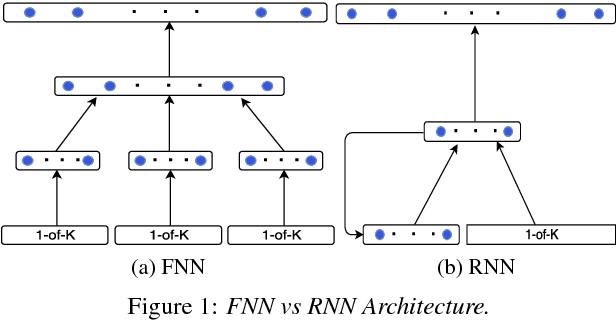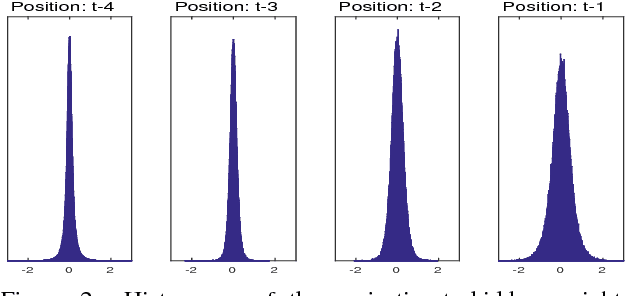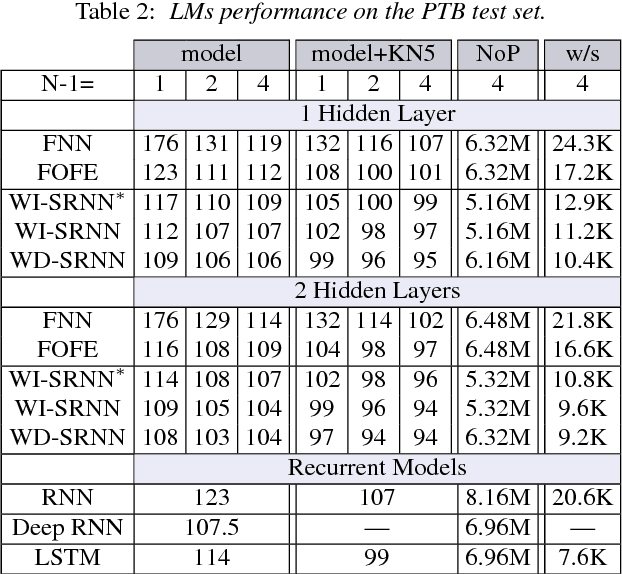Sequential Recurrent Neural Networks for Language Modeling
Paper and Code
Mar 23, 2017



Feedforward Neural Network (FNN)-based language models estimate the probability of the next word based on the history of the last N words, whereas Recurrent Neural Networks (RNN) perform the same task based only on the last word and some context information that cycles in the network. This paper presents a novel approach, which bridges the gap between these two categories of networks. In particular, we propose an architecture which takes advantage of the explicit, sequential enumeration of the word history in FNN structure while enhancing each word representation at the projection layer through recurrent context information that evolves in the network. The context integration is performed using an additional word-dependent weight matrix that is also learned during the training. Extensive experiments conducted on the Penn Treebank (PTB) and the Large Text Compression Benchmark (LTCB) corpus showed a significant reduction of the perplexity when compared to state-of-the-art feedforward as well as recurrent neural network architectures.
 Add to Chrome
Add to Chrome Add to Firefox
Add to Firefox Add to Edge
Add to Edge